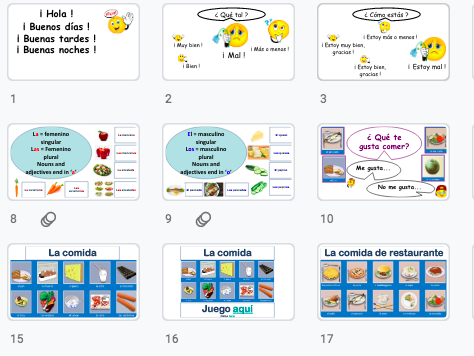Sandia_Teach's Shop
Here you can find PowerPoint presentations introducing Spanish at beginner level. The focus is to introduce vocabulary. Vocabulary is kept simple. The presentations contain colourful images and simple fun activities. The presentations were created to teach Spanish online so you can just use the slides to teach the lesson and use repetitions and questions to encourage children to speak and develop their listening and speaking skills.






















